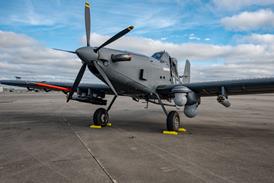New European rules, on in cabin airline emergency medical kits have complex implications
David Learmount/LONDON
Dr Sue Thompson/LONDON
EUROPEAN AIRLINES have, until now, satisfied national regulations covering treatment of in-flight passenger accident or illness by carrying simple in-cabin first-aid kits. They are, however, about to be required to carry much more.
New European Joint Aviation Requirements (JARs) now cover in-flight medical equipment. Specifically, JAR-Ops 1 sub-part K, has now been published in its final draft and was implemented on 1 June for adoption in June 1997.
As it stands today, JAR-Ops 1(K) reveals a Joint Aviation Authorities (JAA) decision that, should a suitably qualified person be on board the aircraft when a passenger or crewmember needs medical attention beyond basic first-aid, some additional equipment should be available to enable that person to capitalise on his or her medical skills and perhaps to save life. Under the new rules, the captain should have the authority to release a cockpit-stored "emergency medical kit" which contains more sophisticated equipment and drugs than does the first-aid pack. Also there has to be a portable first-aid oxygen supply to administer 100% oxygen to patients who might need it. The JAR says that there should be at least two oxygen units, and more according to the number of passengers carried.
Some airlines have, for many years, voluntarily carried equipment over and above first-aid requirements, but there has been, until now, no regulatory guidance as to what additional equipment, if any, would be deemed advisable. For example, British Airways carries an emergency pack with more than 80 items in it "at the moment", and the airline says that it keeps a log of all usage with a view to updating and upgrading the pack if its medical department believes it would be beneficial. BA says that it leads the field in onboard medical equipment, and is being used as a role model by other carriers. The new JAR, by contrast, lists only 23 items, of which 14 are drugs and the remainder equipment.
Because the cost and weight of the new emergency medical kit are low, few operators seem likely to complain. The responsibility rests with the captain, who has to decide whether to allow the in-flight use of the specialist equipment in the emergency kit and the drugs which it contains. There could be legal implications if an attempt to treat a national from a litigious country such as the USA were to go awry.
DO NOT VOLUNTEER
US law, in common with that of many other nations, does not require a doctor to volunteer medical help. In France, it is illegal to ignore a person in need of medical treatment. In the USA during 1985, a "good Samaritan" law was passed to protect ordinary citizens from civil damages resulting from a well-intentioned attempt to provide medical help, but doctors and an airline would not be immune from such action, says a medical source.
Dr Susan Thompson, a UK doctor who has initiated a study into the implications for medical practitioners of administering treatment on board aircraft, says that the airlines and JAAs "...are going to have to come up with proper protocols"...for medical care of passengers on board aircraft, to protect well-intentioned, responsible, airlines and the doctors who volunteer to administer necessary treatment*.
John Balfour, a European aviation-law specialist at UK solicitor Frere Cholmeley Bischoff, says that an inherent medical condition in the patient would not be a legal problem for the airline, but he adds that case law indicates that the carrier would have to have taken reasonable care not to exacerbate the condition. He suggests, however, that airlines should take legal advice on the situation brought about by the onboard availability of the new emergency medical kit.
BA allows only "fully qualified medical practitioners", who have to provide identification to the crew, to use the emergency medical kit.
The airline carried 30 million passengers in the year to March 1994 and recorded 2,078 "medical occurrences". The events resulted in 18 "medical diversions". Dr Roy Maclaren of London, UK-based Aeromedic Innovations, observes: "The continuing increase in the number of passengers travelling, together with longer sectors and more non-stop flights, means that today's airlines are experiencing more individual medical emergencies in flight."
BA's experience was that the most common events involved diarrhea, anxiety, indigestion, fainting and sickness. These ailments are normally treated with first-aid equipment and crew training. Thompson points out, however, that the most serious on board medical emergencies - as opposed to lesser complaints - are caused by cardiac (heart) and respiratory (breathing) problems. She feels that the JAR emergency medical kit, resembling as it does an emergency doctor's bag, appears to be competently assembled with those problems as a priority.
Source: Flight International























